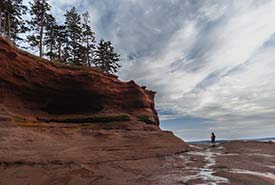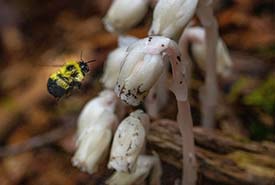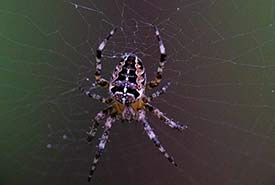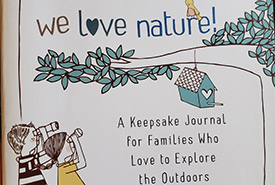Connection and conservation during COVID-19

Exploring Burntcoat Head Park in Noel, Nova Scotia. (Photo by Kyle Erickson)
A year ago, my husband and I sold our house, packed up everything we owned — including two cats — and relocated from Edmonton to Halifax. Between new jobs, a new home and a new city, we didn’t have a lot of time to get involved with the local conservation community or to connect with new people once we arrived.
Then, COVID-19 hit, and all hopes of in-person volunteering opportunities and hiking meetups went out the window.
Finding connections with other nature enthusiasts in a new province was hard enough, but COVID-19 made it impossible. We filled our time with local hikes and adventures, and rewatched old David Attenborough documentaries from 30-plus years ago. But it felt like we were in a silo.
Conservation efforts around the world have been hit hard by the pandemic, with many parks in Africa suffering from a lack of tourism income and tree planting programs affected in Canada. And as we watched Australia’s wildfires burn and heard about all the struggles our natural world was facing due to COVID-19, we felt disconnected and helpless. You can throw money at a problem, but getting your hands dirty is much more satisfying.
And then, out of the blue, we heard about the Nature Conservancy of Canada’s (NCC’s) Big Backyard Bioblitz. It was a volunteering event that encouraged you to observe and document plants, animals and insects in your own backyard or local greenspace from August 24 to 30. These observations help to fuel research that monitors plant and animal populations, invasive species, and rarely observed specimens in specific areas.
Sure, it wasn’t the same as meeting with other humans who are passionate about conservation and the natural world, but it was something. It gave us an opportunity to be a part of a conservation project and to contribute to science with others in our community. We couldn’t see our fellow participants, but we knew they were there through their identifications and observations in the iNaturalist app. And during a time where connections are so difficult to build and maintain, it was a welcome change.

Ghost pipe (Photo by Brittany Foster)
Over the course of the week, we explored our backyard in minute detail. We noticed plants and insects we’d never seen before. We took to the trails and scanned and documented everything we could find using the iNaturalist app, hoping that in some small way, our efforts would lead to something useful. We discovered names for things that we had always been aware of but had never taken an interest in (like ghost pipes), and things that we thought we knew the names for wrongly identified (like orb-weavers).

Orb-weaver (Photo by Brittany Foster)
The BioBlitz helped us to become more aware of all the living things that surround us every day.
When you’re out on the trails, sometimes you focus on your end point. The deep muscle burn from climbing and the sweat on your brow from a blazing sun push you to ask, “How much farther?” It can be hard to stop and smell the roses.
But participating in NCC’s Big Backyard BioBlitz encouraged us to pause. To crouch down and inspect a new plant or bug. To really open our eyes and acknowledge how beautifully diverse and rich in life the natural world is. And even though we were doing it solo, being part of a community of conservation enthusiasts made us feel connected to something bigger — a feeling we’d both been craving.
So, cheers to connecting through conservation, whether it be through meetups and events or apps and distance volunteering. I can’t wait to meet you out on the trails.




